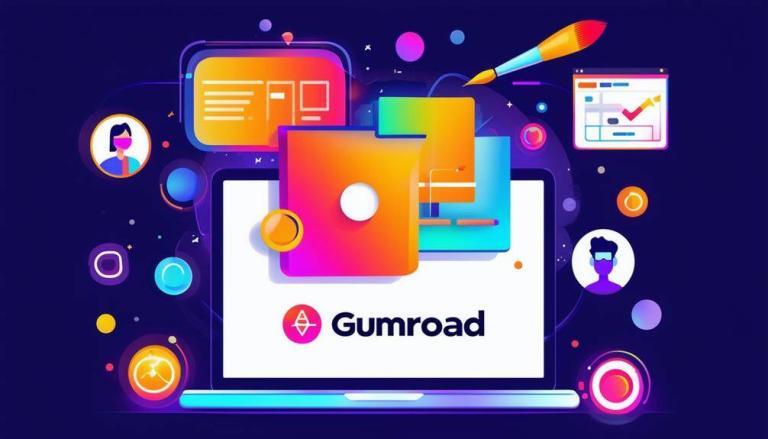Repurposing content for social media transforms your existing materials into a goldmine of fresh, engaging posts. Start by identifying valuable PLR content and analyzing your target platforms. Adapt the material for different audiences, creating eye-catching visuals and crafting compelling captions. Turn long-form content into infographics, videos, or interactive stories. Leverage your repurposed content for live sessions to boost engagement. Track performance metrics to refine your strategy and maximize impact. By tailoring your approach to each platform’s unique characteristics, you’ll uncover the full potential of your existing materials and captivate your audience. Discover how to unleash the power of your existing materials and dominate social media.
Quick Rundown
- Transform long-form content into short, shareable video clips highlighting key points for social media platforms.
- Convert data-heavy articles into visually appealing infographics to enhance engagement and shareability.
- Extract memorable quotes from content and overlay them on relevant images or branded backgrounds for quick sharing.
- Adapt existing content’s tone, language, and examples to resonate with specific audience segments on different platforms.
- Break down longer articles into a series of slide-based images for platforms like Instagram and LinkedIn.
Identifying Valuable PLR Content
To kickstart your content repurposing journey, you’ll need to sift through available PLR content and pinpoint high-quality pieces that align with your audience’s interests and your brand’s goals.
Start by analyzing your target demographics and their online behavior. Leverage analytics tools to identify trending topics and keywords within your niche. This data-driven approach will help you select PLR content that resonates with your audience.
Next, evaluate the PLR content’s quality and relevance. Look for well-researched, factual information from reputable sources. Prioritize content that offers unique insights or solves specific problems your audience faces. Check for evergreen topics that maintain relevance over time, as these provide long-term value for repurposing.
Consider the content’s adaptability across various platforms. Opt for PLR material that can be easily broken down into smaller, platform-specific pieces. Assess the potential for visual elements, such as infographics or video scripts, which perform well on social media.
Analyzing Social Media Platforms
Once you’ve identified valuable PLR content, it’s time to understand the unique characteristics of various social media platforms to maximize your repurposing efforts.
Each platform has its own audience demographics, content preferences, and algorithms that determine visibility. By analyzing these factors, you can tailor your repurposed content for ideal engagement and reach.
To effectively analyze social media platforms, focus on these key aspects:
- Audience demographics: Understand the age, gender, location, and interests of users on each platform.
- Content format preferences: Determine whether users prefer short-form videos, images, text posts, or long-form content.
- Engagement metrics: Analyze likes, shares, comments, and click-through rates to gauge content performance.
- Posting frequency and timing: Identify the ideal times and frequency for posting on each platform.
Adapting PLR for Different Audiences
When adapting Private Label Rights (PLR) content for different audiences, you’ll need to focus on tailoring the material to resonate with specific target groups.
Consider adjusting the language, tone, and examples used in the PLR content to match the preferences and expectations of your intended audience.
Tailoring PLR Content
While PLR content offers a valuable starting point, adapting it for different audiences is pivotal to maximize its impact and relevance across various market segments. To tailor PLR content effectively, you’ll need to evaluate your target audience’s demographics, preferences, and pain points. This process involves more than just superficial changes; it requires a deep understanding of your audience’s needs and expectations.
To successfully adapt PLR content for different audiences, follow these strategic steps:
- Conduct thorough audience research to identify key characteristics, interests, and challenges of each target segment.
- Analyze the original PLR content to determine which elements need modification to align with your audience’s preferences.
- Customize the tone, language, and examples to resonate with each specific audience segment.
- Incorporate relevant data, case studies, or industry-specific information to enhance credibility and value.
Audience-Specific Language Tweaks
One of the most impactful ways to adapt PLR content for different audiences is through audience-specific language tweaks, which can greatly enhance engagement and relatability. To effectively implement these tweaks, you’ll need to conduct thorough audience research.
Analyze demographics, psychographics, and behavioral data to understand your target audience’s preferences, pain points, and communication styles.
Once you’ve gathered this information, tailor your language accordingly. For a younger audience, incorporate trendy slang and pop culture references. For professionals, use industry-specific jargon and formal language. If targeting a global audience, consider cultural nuances and avoid idioms that may not translate well.
Use tools like the Flesch-Kincaid readability score to adjust your content’s complexity based on your audience’s education level. Incorporate keywords and phrases that resonate with your specific audience, improving both engagement and SEO performance.
Remember to adapt your tone as well. A casual, conversational tone might work best for a social media audience, while a more authoritative voice could be more appropriate for a B2B context. By making these audience-specific language tweaks, you’ll transform generic PLR content into highly targeted, engaging material.
Creating Eye-Catching Visual Content
Visual content is a powerful tool for repurposing your existing material and capturing your audience’s attention across multiple platforms. By transforming your text-based content into eye-catching visuals, you’ll increase engagement and reach a wider audience. Studies show that posts with images receive 2.3 times more engagement than those without.
To create compelling visual content from your existing material, consider these four strategies:
- Infographics: Convert data-heavy articles into visually appealing infographics, making complex information easily digestible.
- Quote graphics: Extract memorable quotes from your content and overlay them on relevant images or branded backgrounds.
- Video snippets: Transform long-form content into short, shareable video clips highlighting key points.
- Carousel posts: Break down longer articles into a series of slide-based images for platforms like Instagram and LinkedIn.
When designing your visuals, guarantee they align with your brand identity and use consistent color schemes and fonts. Optimize each piece for the specific platform you’re targeting, adhering to recommended image sizes and formats. By repurposing your content into visuals, you’ll maximize its impact and extend its lifespan across various social media channels.
Crafting Engaging Social Media Captions
To maximize the impact of your repurposed visual content, you’ll need to pair it with compelling social media captions that grab attention and drive engagement. Crafting effective captions requires a strategic approach that considers your audience’s preferences and platform-specific best practices.
Start by analyzing your top-performing posts to identify caption elements that resonate with your followers. Use this data to inform your caption strategy for repurposed content. Keep captions concise, aiming for 125 characters or fewer on platforms like Twitter and Instagram. Incorporate relevant hashtags to increase discoverability, but limit them to 3-5 per post for ideal engagement.
Use action words and questions to encourage interaction, and include a clear call-to-action (CTA) that aligns with your content goals. Experiment with different caption styles, such as storytelling, behind-the-scenes insights, or user-generated content spotlights. A/B test various caption formats to determine what drives the most engagement for your repurposed content.
Lastly, guarantee your captions complement the visual content without being redundant. Use them to provide context, spark curiosity, or add value that enhances the overall message of your repurposed material.
Transforming PLR Into Infographics
Transforming PLR (Private Label Rights) content into infographics can greatly boost your content’s reach and engagement, as visually appealing data presentations are 30 times more likely to be read than text articles. By repurposing PLR into visually striking infographics, you’re not only maximizing your content’s potential but also catering to the 65% of people who are visual learners.
To effectively transform PLR into infographics, follow these strategic steps:
- Analyze the PLR content: Identify key statistics, facts, and processes that lend themselves well to visual representation.
- Design a cohesive layout: Use a consistent color scheme and typography that aligns with your brand identity.
- Simplify complex information: Break down intricate concepts into easily digestible chunks, using icons and illustrations to enhance understanding.
- Include a clear call-to-action: Guide your audience on what to do next, whether it’s visiting your website or sharing the infographic.
Developing Video Content From PLR
You can effectively transform PLR content into engaging video formats to reach a wider audience.
Start by adapting the PLR text into a script suitable for video narration, ensuring it’s concise and conversational.
Enhance your video’s impact by customizing visuals that align with your brand and incorporating a unique voiceover to differentiate your content from other PLR users.
Transform PLR Into Videos
PLR articles serve as an excellent foundation for creating engaging video content that resonates with your target audience. By transforming PLR into videos, you’re not only diversifying your content portfolio but also tapping into the growing demand for visual content. Research shows that 54% of consumers want to see more video content from brands they support.
To effectively transform PLR into compelling videos, follow these steps:
- Analyze your PLR content and identify key points that can be visually represented.
- Create a storyboard or script that adapts the PLR content into a narrative suitable for video format.
- Use data visualization tools to transform statistics or complex information into easily digestible graphics.
- Incorporate relevant stock footage, animations, or screen recordings to illustrate concepts and maintain viewer engagement.
Remember to tailor the video content to your specific audience’s preferences and pain points. Use analytics to track viewer retention and engagement rates, allowing you to refine your video strategy over time. By repurposing PLR content into videos, you’re maximizing your content’s reach and impact while catering to different learning styles within your audience. This approach can greatly boost your content marketing ROI and strengthen your brand’s online presence.
Customize Visuals and Narration
Customizing visuals and narration is crucial for developing engaging video content from PLR articles, as it allows you to align the material with your brand’s unique voice and audience preferences. Start by analyzing your audience demographics and preferences to guide your visual choices. Select images, graphics, and animations that resonate with your target viewers and complement the content’s message.
For narration, consider your brand’s tone and style. If you’re targeting a professional audience, maintain a formal tone. For a younger demographic, adopt a more casual approach. Use text-to-speech software for quick narration or invest in professional voice-over talent for higher-quality results. Confirm the narration pace matches the video’s visual flow and your audience’s attention span.
Customize the script to include relevant examples and data points that speak directly to your audience’s needs and pain points. Incorporate your brand’s unique insights and perspectives to differentiate your content from competitors. Use analytics tools to track viewer engagement and retention rates, refining your customization approach based on performance data. By tailoring visuals and narration, you’ll create more impactful video content that drives engagement and supports your content marketing goals.
Repurposing PLR for Stories
Three key strategies can transform generic PLR content into compelling, unique stories that resonate with your target audience. By repurposing PLR effectively, you’ll create engaging narratives that captivate your readers and drive engagement across your social media platforms.
First, analyze your audience’s preferences and pain points. Use this data to tailor the PLR content to address their specific needs, ensuring your stories strike a chord with your target demographic.
Next, infuse your brand’s unique voice and perspective into the PLR material. This personalization will set your content apart from competitors using the same source material.
To maximize the impact of your repurposed PLR stories, consider these four tactics:
- Incorporate real-life examples or case studies
- Add current industry statistics or trends
- Create character-driven narratives
- Develop a series or episodic content structure
Leveraging PLR for Live Sessions
You can maximize your PLR content’s value by transforming it into engaging live sessions.
Consider converting your PLR materials into dynamic presentations that captivate your audience and spark discussions.
Additionally, you can use PLR content as a foundation for interactive Q&A sessions, allowing you to address your audience’s specific concerns while showcasing your expertise.
Transform PLR Into Presentations
PLR content can be transformed into engaging presentations, allowing you to leverage existing material for live sessions and webinars. This strategic approach maximizes your content’s value while saving time and resources. By repurposing PLR into presentations, you’ll create fresh, audience-focused material that can be delivered across multiple platforms.
To effectively transform PLR into presentations, follow these key steps:
- Analyze your audience: Understand their needs, pain points, and preferences to tailor the content accordingly.
- Extract key points: Identify the most relevant and impactful information from the PLR material.
- Visualize data: Convert text-heavy content into eye-catching graphs, charts, and infographics.
- Add interactivity: Incorporate polls, Q&A sessions, and breakout rooms to enhance engagement.
Interactive Q&A With PLR
Leveraging PLR content for interactive Q&A sessions can greatly enhance audience engagement and provide valuable insights during live events. By repurposing PLR material, you’ll create dynamic, audience-driven experiences that resonate with your participants.
To maximize the impact of your Q&A sessions, consider these strategies:
| Strategy | Benefit |
|---|---|
| Pre-select questions | Guarantees relevance and flow |
| Incorporate polls | Boosts real-time engagement |
| Use case studies | Provides practical context |
| Offer downloadables | Increases value for attendees |
By preparing a diverse range of questions from your PLR content, you’ll be ready to address various topics that interest your audience. This approach allows you to demonstrate expertise while maintaining flexibility in your responses.
Remember to tailor the PLR content to your brand voice and audience needs. Use data points and statistics from the PLR to support your answers, adding credibility to your responses. Additionally, encourage attendees to submit their own questions, creating a balanced mix of prepared and spontaneous content.
Measuring Repurposed Content Performance
To gauge the success of your repurposed content strategy, it’s crucial to track and analyze key performance metrics across different platforms and formats. By monitoring these indicators, you’ll gain insights into what’s working and where improvements are needed.
Focus on these essential metrics:
- Engagement rates: Track likes, shares, comments, and click-throughs to measure audience interaction with your repurposed content.
- Traffic sources: Identify which platforms are driving the most visitors to your website or landing pages.
- Conversion rates: Measure how effectively your repurposed content is turning viewers into leads or customers.
- Time on page: Assess how long users are engaging with your content to determine its relevance and value.
Use analytics tools provided by social media platforms and your website to gather this data. Compare the performance of repurposed content against your original content to identify trends and patterns. Adjust your strategy based on these insights, focusing on the formats and platforms that yield the best results.
Conclusion
You’ve now got the tools to transform your PLR content into social media gold.
By analyzing platforms, adapting for audiences, and creating diverse content types, you’ll maximize your reach and engagement.
Remember to track performance metrics to refine your strategy.
With these techniques, you’ll breathe new life into old material, saving time and resources while consistently delivering value to your followers.
It’s time to leverage your PLR and dominate social media.







